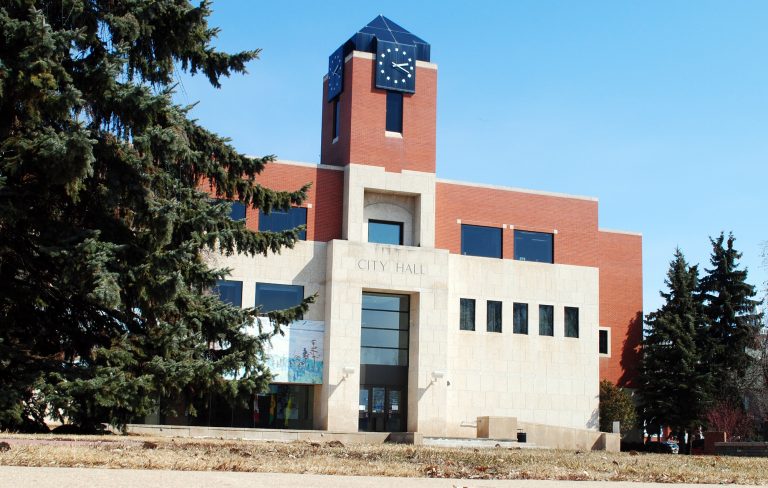
Prince Albert’s back alley curfew bylaw passed third and final reading on Monday, but with few changes following a meeting with leaders from the Prince Albert Grand Council.
The biggest change involves the review date. Council will review the bylaw after six months instead of the usual one-year trial period.
Mayor Greg Dionne and Ward 4 Coun. Don Cody, who recently met the PAGC leaders and city staff to discuss the bylaw, said that was an understandable request.
“That’s perfectly fair,” Cody told council during Monday’s meeting. “Let’s try it for six months. If it doesn’t work, and if we find there are problems with our professional police (officers) then we will do something about it.”
In an interview on Tuesday, Dionne said he supported the six month trial period because back alleys are used the most during the summer. He believes they’ll have enough information to know if it’s working once winter hits.
Dionne told council the PAGC declined to endorse the bylaw because it gave police additional powers. He told council that was understandable, given the number of Black Lives Matter protests going on across the globe. However, he remained adamant that the bylaw would not lead to racial profiling or unjust targeting of Indigenous people.
“We didn’t pass this bylaw for one person,” Dionne said on Tuesday. “We passed this for everyone.”
The PAGC previously issued a statement in February saying they hoped the curfew bylaw would benefit all residents and keep the community safe. The statement also said they trusted PA police to take appropriate action if any officer began racial profiling Indigenous residents.
In an interview on Tuesday, Dionne said the PAGC would be invited to review the bylaw after the six-month period. He also said they would work with the PAGC to increase the number of Indigenous police officers in the community.
“We live in a community, unfortunately, where crime is still rampant,” Dionne said. “It’s not just PA crime. Look at the statistics. It’s everywhere, but I do believe, if we all work together, we can make it better. At the same time, we have to keep our eyes wide-open.”
Roughly 30 per cent of all sworn officer in the Prince Albert Police Service (PAPS) identify as First Nations or Métis, according to the PAPS 2019 annual report. Canadian Centre for Justice statistics show roughly four per cent of all Canadian police officers identify as Indigenous.
Council members who voted in favour of the bylaw said it was overwhelmingly popular with their constituents. Many council members said it wasn’t a perfect bylaw, but it was a good start to getting a handle on crime.
“What the back alley that is being proposed right now … is telling the criminals and the people who shouldn’t be there ‘stay out,’” Coun. Blake Edwards said. “The five phone calls that I received today said ‘you’d best be supporting this, because we’re tired of crime in our community.”
“I have heard from a number of people who want us to do this,” Coun. Dennis Ogrodnick added. “They want us to keep the residents in all areas of the city who have back alleys safe. They don’t want to have people walking down those alleys and breaking into their garages, checking their cars, etc.”
Couns. Charlene Miller and Terra Lennox-Zepp were the only two councillors to vote against the bylaw.
Lennox-Zepp was skeptical the bylaw would reduce crime, and said studies from cities like Halifax show racial profiling is still a problem.
In March 2019, a report from University of Toronto criminology professor Scot Wortley showed Halifax police street check black people at a rate six times higher than white people. The same report showed that 30 per cent of Halifax’s black male population had been charged with a crime, while 6.8 per cent of the while population was charged over the same period.
The report lead to the abolishment of street checks in the community, and to an apology from Halifax Police Chief Dan Kinsella.
Lennox-Zepp said there was a possibility Prince Albert’s curfew bylaw could lead to a similar problem.
“These types of analogous practices contribute to systemic racism in our communities,” she said during the debate on Monday. “This looks like a backwards step when the rest of Canada is trying to take a forward step on this issue.”
Instead of more bylaws, Lennox-Zepp said the City should focus on prevention programs. She brought a new motion that would have seen the $20,000 needed to put up curfew signs spent on crime reduction or anti-gang programs. That motion failed by a 7-2 margin.
Lennox-Zepp later asked for a report on contributing to the Bernice Sayese Centre’s anti-gang strategy during the Notice of Motion portion of the meeting.
Ward 8 Coun. Ted Zurakowski, who was responsible for kick-starting the back alley curfew debate more than a year ago, said he supported anti-gang and crime reduction strategies. However, he said the new bylaw was still a necessary part of reducing crime.
“I think we should host a round-table in less than a year from now about crime reduction strategies within our community, with all of our levels of government and members of the public, and those who are the experts in that program,” he said during the meeting. “That doesn’t stop us from this pathway here.”
Under the new bylaw, back alleys cannot be used between midnight and 6 a.m. except by owners or permanent residents of properties next to the alley. Residents visiting people living in those properties are also exempted from the bylaw. Anyone found violating the bylaw faces fines of up to $5,000.
